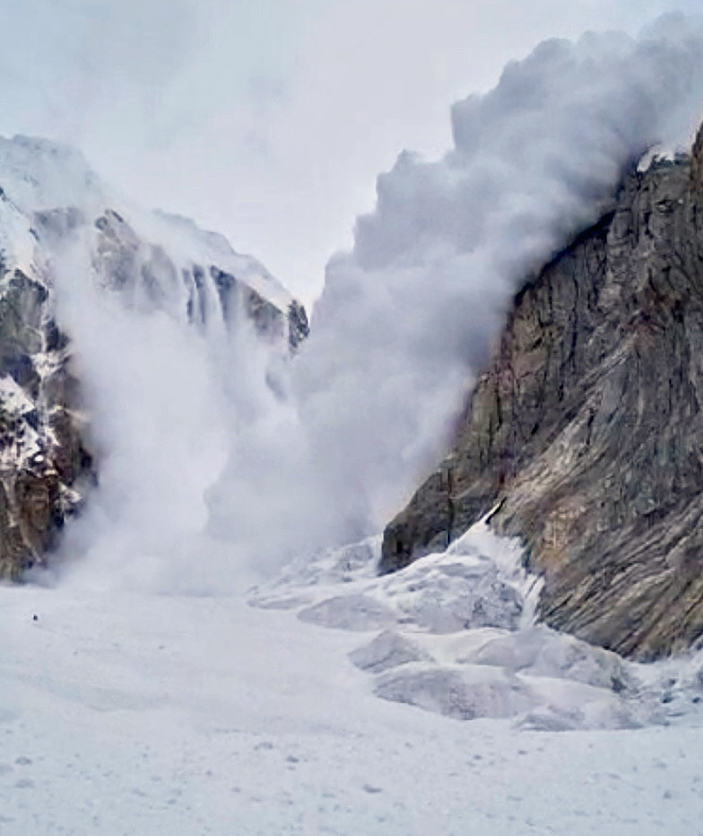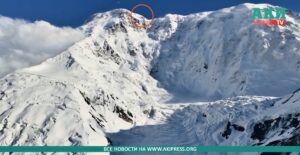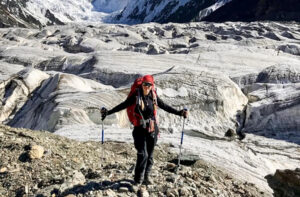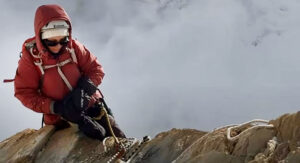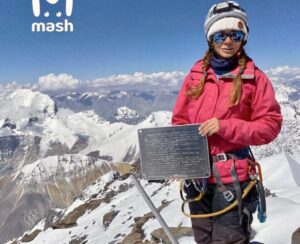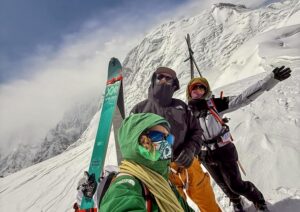Kazakh alpinist Boris Dedeshko was one of three survivors of several avalanches on 7,010m Khan Tengri last week. Here, he speaks to ExplorersWeb about the tragic incident and how he and two fellow Kazakhs survived while one man, Aleksey Smirnov of Moscow, died.
The accident occurred on July 29 on Khan Tengri, the second-highest peak in the Tien Shan mountains. A popular mountaineering objective, it straddles the borders of Kazakhstan, Kyrgyzstan, and China and is one of the vaunted Snow Leopard peaks. The late Anatoly Boukreev considered it the most beautiful mountain on Earth.
Although it is not an 8,000’er, it’s more difficult and dangerous than several of those Himalayan and Karakoram giants. Avalanches are frequent, and both the north and south sides feature an exhausting summit push. Dedeshko’s team was climbing from the south.
Unseasonably warm
Dedeshko explained that this season’s abnormally warm weather caused avalanches both day and night. Most years, passing the so-called Bottleneck on the south side in the early hours is considered quite safe. But this season was different. Crossing was dangerous at any time of day.
Dedeshko’s team met in Almaty on July 25, then moved into the mountains and climbed up to Komsomol Pass at 4,000m. Here, they set up camp and spent the night there to acclimatize.
On July 27, they left for Kyrgyzstan. At the Karkara Base Camp, Dedeshko met a doctor from South Inelchek who had returned from taking a patient with an open leg fracture to the hospital. The avalanche that caught that climber came down at 3:30 am, an unusual time indicative of the dangers of that season.
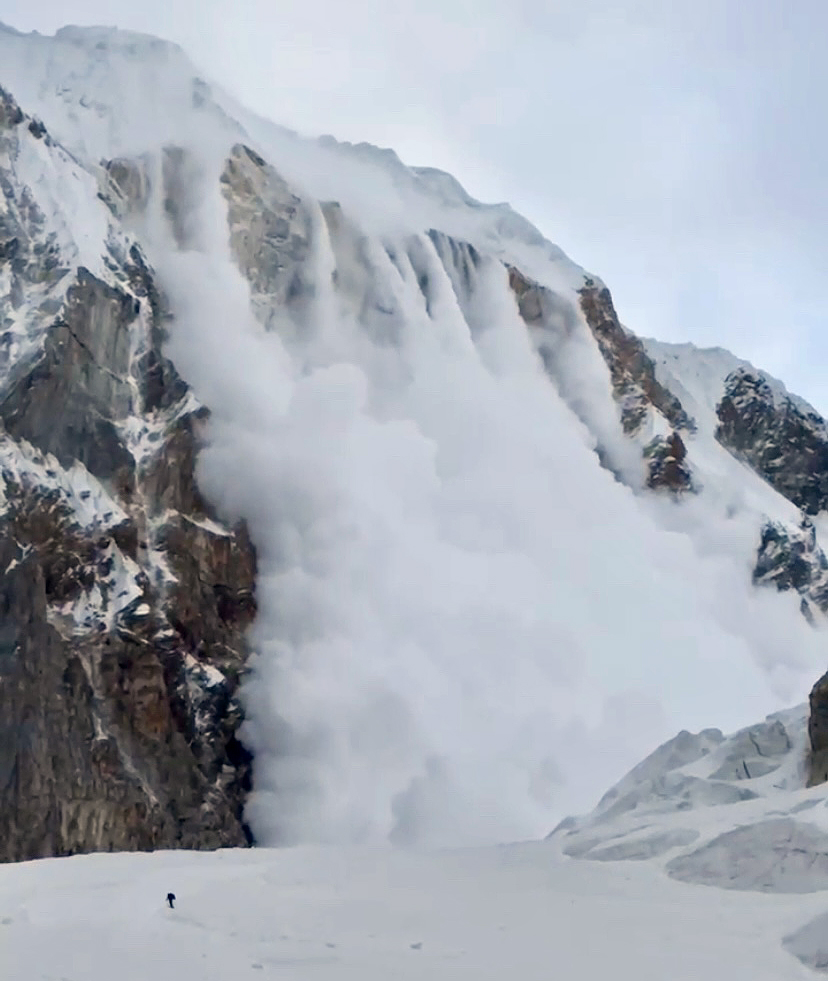
Avalanche on July 29. Frame of a video courtesy of Boris Dedeshko
On the morning of July 28, Dedeshko and his partners flew from Karkara Base Camp to the Base Camp of South Inelchek. That same day, they climbed to their first camp at 4,200m, at the foot of Khan Tengri.
The next morning, the party got up at 1 am, had breakfast, packed up the tents, and left at 3 am for Camp 2.
At 5:13 am, an avalanche roared down from Chapaev Peak, raising huge billows that covered Dedeshko and his partners in snow dust.
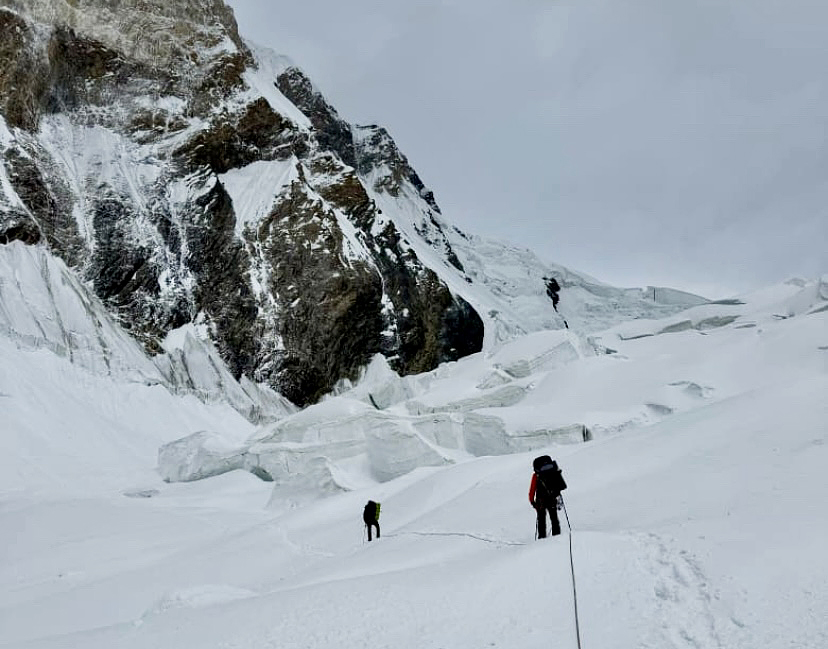
Photo: Boris Dedeshko
The Bottleneck
At 8 am, the climbers stopped at the entrance to the Bottleneck. This is a narrow place under the wall of Chapaev Peak, where ice and rocks come down when the sun hits the wall. Dedeshko’s team stopped where everyone usually catches their breath before hurrying past the obstacle.
“We stood under the protection of a serac, an ice wall about 3-5 meters high,” recalls Dedeshko.
A few minutes later, they heard the sound of a new avalanche.
“I told the team to put their hoods on and shoved my head into a small hole in this ice wall,” Dedeshko says.
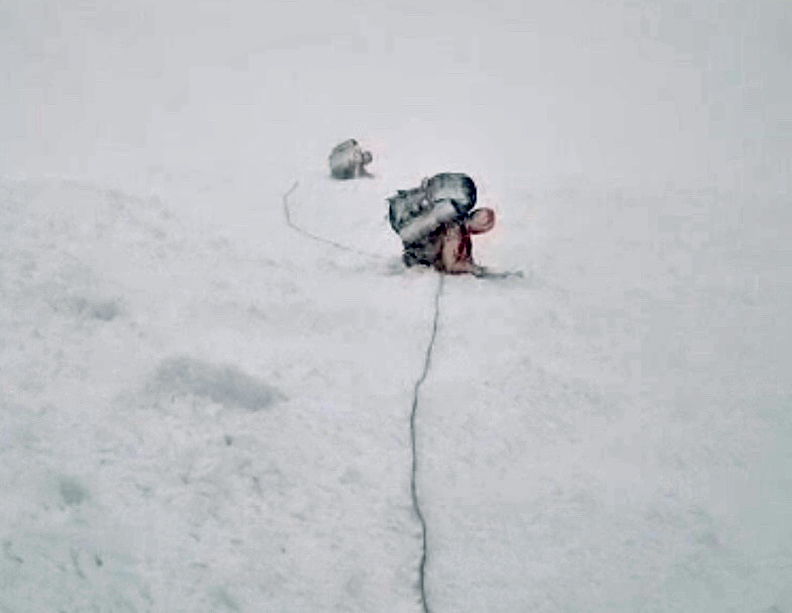
Covered in snow dust. Photo: Boris Dedeshko
Marianna Petrova, Pavel Blazhnov, and Dedeshko stood shoulder to shoulder, pressed against the ice wall with their heads in a gap where there was a small amount of air. However, Alexey Smirnov grabbed his backpack, thereby making a fatal mistake.
“In times of danger, you need to save your life, not your things,” recalls Dedeshko. “He [Snirnov] just needed two seconds to join us. The snow crushed him with his backpack in his hands.
Buried but alive
The three Kazakh climbers, Dedeshko, Petrova, and Blazhnov were buried but could breathe, thanks to their positioning near a space in the ice wall. But it was so bright in their prison that it seemed that if you stretched out your hand and punched a hole upwards, fresh air would flow down like a river, and they would be able to dig themselves out. But neither Blazhnov nor Dedeshko could get to the top.
Then Dedeshko started digging out his backpack, which contained a radio. He succeeded and contacted the Base Camp, reporting the avalanche and indicating their exact location.
Four guides in another nearby camp immediately hurried to their aid. In 20 minutes, the guides had already started searching for Dedeshko’s crew, still buried under the avalanche. It was not easy to find them because the avalanche had blanketed that entire area. But a few minutes later, the buried climbers had access to air. They had been under the snow for about 1 hour and 40 minutes.
A third avalanche strikes
“There were two meters of snow above our heads, and there was about 3.5 to 4 meters of snow above Aleksey [Smirnov],” says Dedeshko.
When the rescuers found Smirnov, two and a half hours had passed since the avalanche. Smirnov likely died within a few minutes after the avalanche since he had no air space around his head.
After the three climbers were freed and Smirnov was found dead, a third avalanche scattered the personal belongings of the rescuers. After this, the camp leader ordered everyone to get back to safety. The rescuers and survivors began to descend and reached base camp at 5:20 pm, desperately tired but safe.
Dedesho thinks that this season, it is better to climb Khan Tengri from the north.
